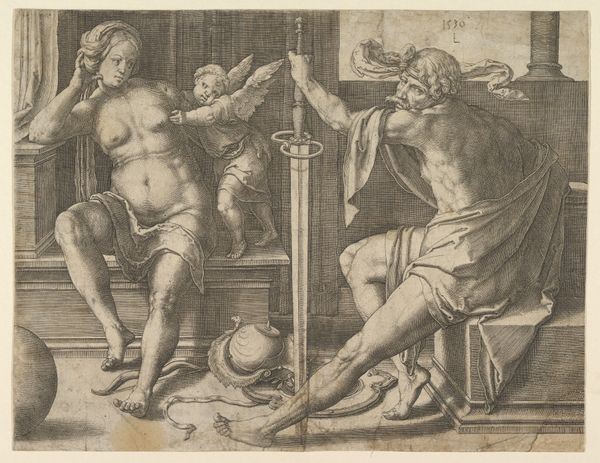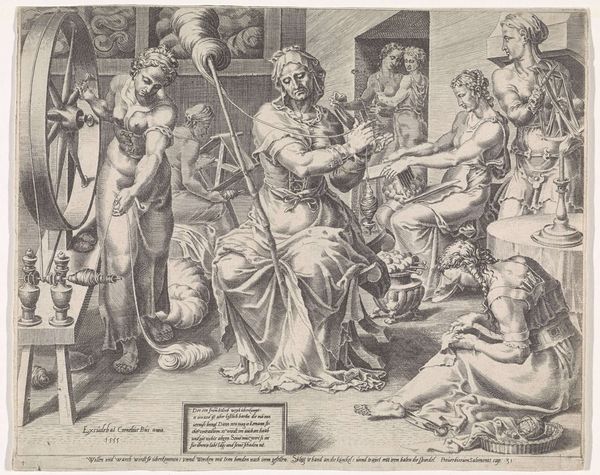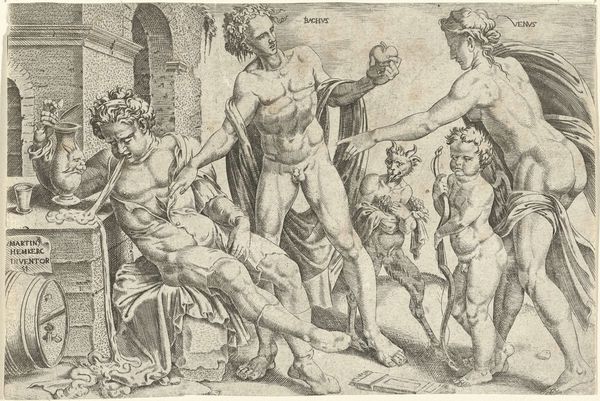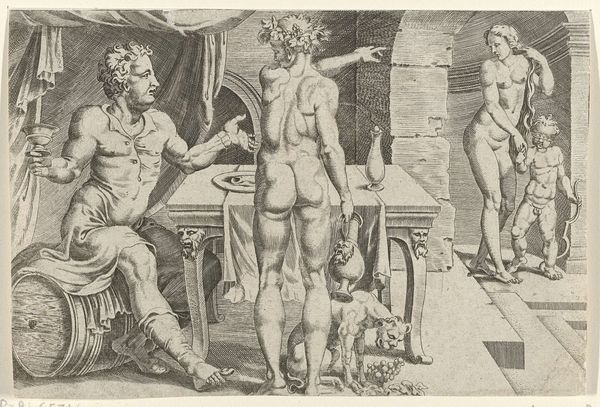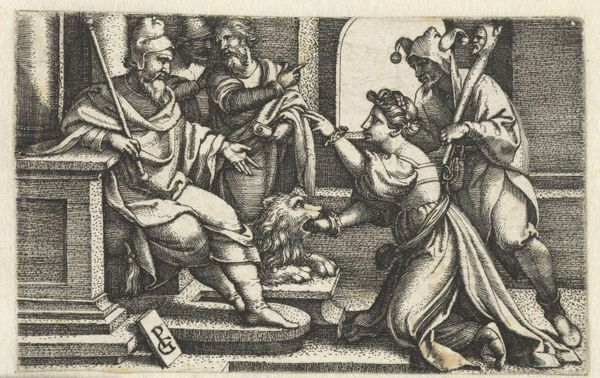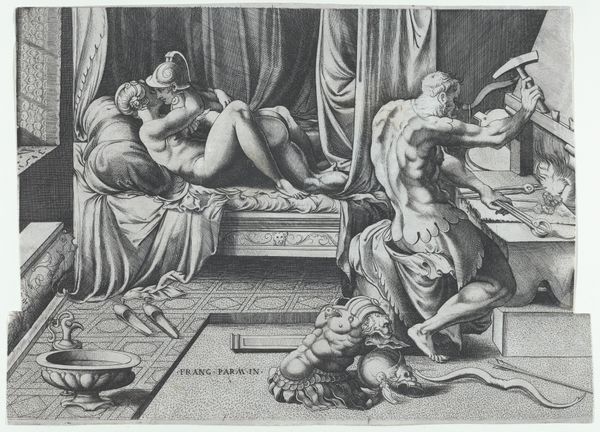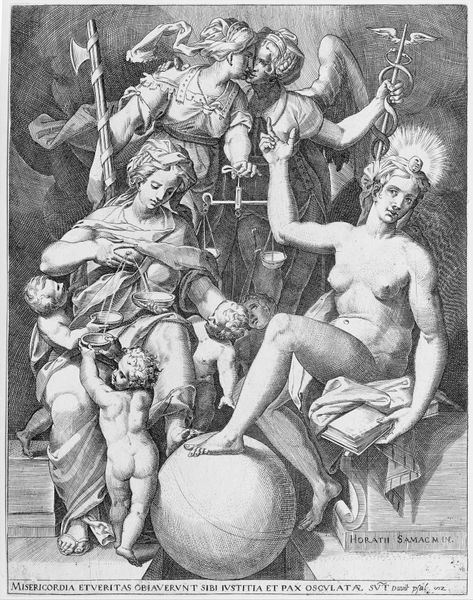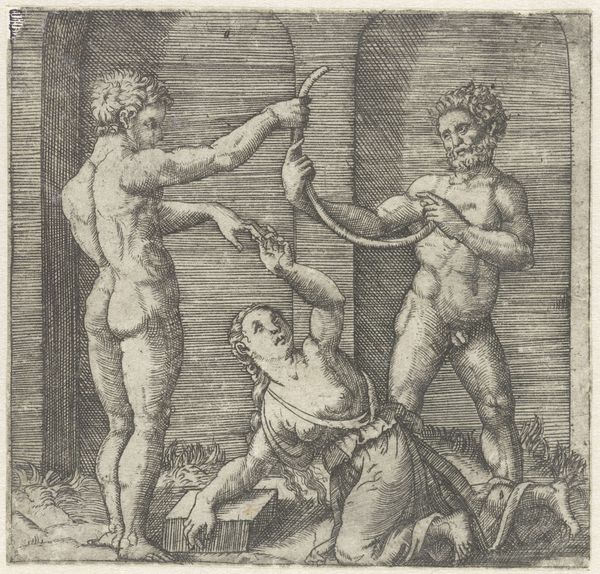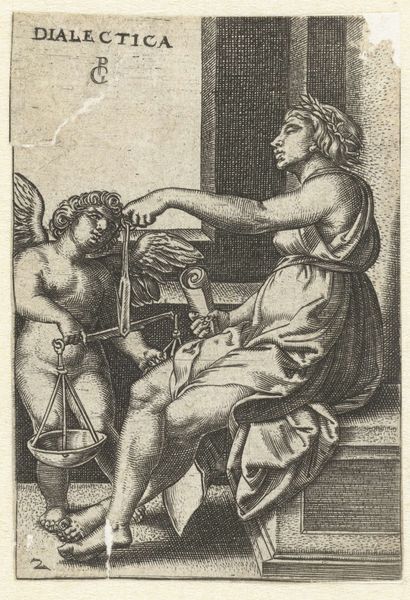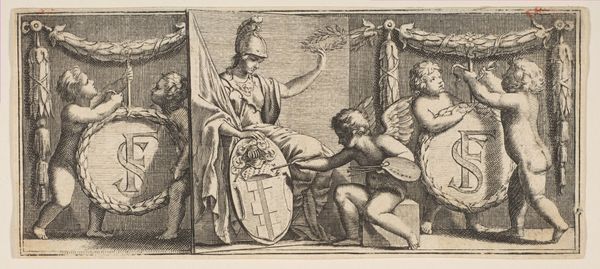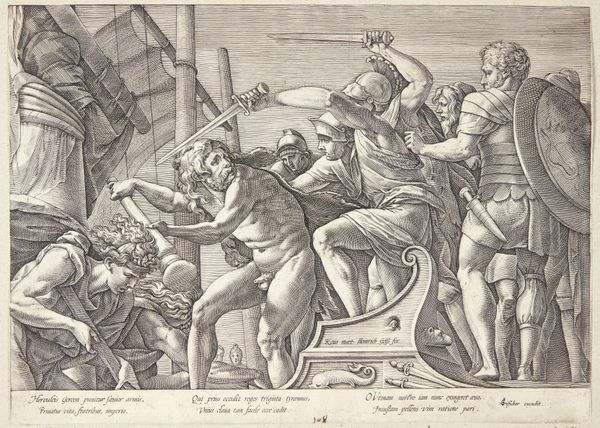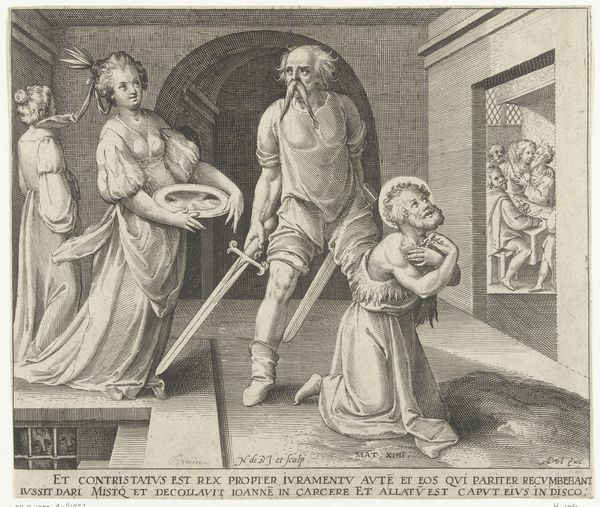
print, engraving
#
allegory
# print
#
figuration
#
history-painting
#
northern-renaissance
#
nude
#
engraving
Dimensions: 7 3/8 x 9 5/8 in. (18.73 x 24.45 cm) (image, trimmed within platemark)
Copyright: Public Domain
Curator: Welcome. Before us hangs "Mars," an engraving created around 1530 by the Northern Renaissance artist Lucas van Leyden. Editor: Immediately striking is the stillness. The scene seems frozen, contemplative. It lacks the dynamism we often associate with Mars, the god of war. Curator: Indeed. Leyden's mastery of the engraving technique is quite evident. Notice the textures, the gradients achieved solely through variations in line density and weight. Consider also the scale; the physical labor needed to produce such a detailed image is immense, a testament to craft traditions. Editor: What pulls me in, though, is how the conventional imagery of Mars, usually full of martial power, is subverted here. We see him not in battle, but almost pensive, as Venus reaches towards his massive sword. The discarded helmet speaks of vulnerabilities laid bare. Even the cupid seems to have caught Mars in an unexpected moment of humanity. Curator: Excellent point. It's tempting to look at this from the lens of early printmaking; the impact of prints in circulating classical allegories, allowing wider audiences access to humanist thought... Editor: ...Or think of the cupid reaching at the handle of Mars’ sword. Does the symbol of Mars' might become a playful gesture of innocence, a longing, maybe, for a pre-conflict peace? Or is it suggesting something more complex: perhaps war is innate, almost part of a universal language understood even by infants? Curator: Such visual play was a significant element of 16th-century Northern Renaissance prints. The affordability of this print, due to developments in production techniques, opened the symbolism to different strata of society beyond wealthy patrons. These nuances had considerable implications, both intellectual and political. Editor: It makes me wonder about the audience for these images and their own interpretations, colored by their personal experiences and collective knowledge of shared iconography. Curator: Ultimately, analyzing "Mars" is not simply understanding symbols; it is an unpacking of human endeavor - the making process alongside its historical context. Editor: Precisely, but it also reminds us how images, carefully woven with symbols, tap into enduring narratives within our cultural psyche. The image acts as a quiet moment of introspection and invites continued readings.
Comments
minneapolisinstituteofart almost 2 years ago
⋮
By 1529, Lucas was influenced by Italian Renaissance art with its emphasis on monumental form. He became obsessed with the human figure depicted in bold form and confident pose. The engraving Mars, Venus and Cupid is typical of Lucas's late manner with its classicizing, sculpturesque nudes. The sensitive control of light and shade, plasticity of form and animated surface reflect the influence of the German master Albrecht Dürer and the Flemish painter Jan Gossaert called Mabuse, who were both influenced by Raphael and the Italian engraver Marcantonio Raimondi. Thematically, the composition is an allegory of love and strife. Venus expresses inner union and accord with the seductive gaze and posture of a temptress. In contrast, Mars represents disunity and discord bearing his sword and peering at the viewer. The sphere depicted in the left of the composition alludes to domination and instability --a love that is unsure. In essence, Lucas's composition is a moralizing comment on the sin of carnal love and adultery.
Join the conversation
Join millions of artists and users on Artera today and experience the ultimate creative platform.
